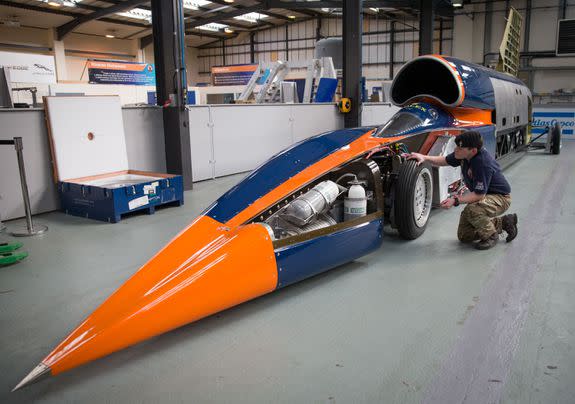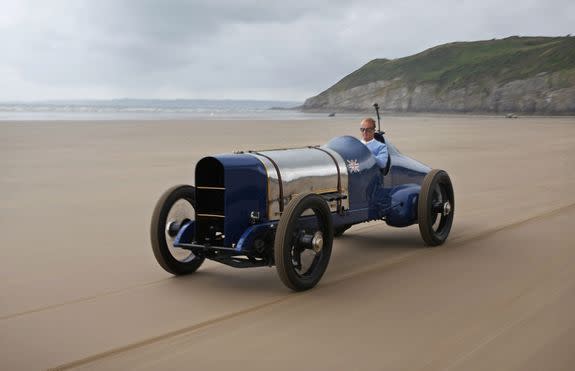Flying cars aren't real yet, but these supersonic vehicles already exist

Self-driving vehicles are passé in Silicon Valley. Now it's all about flying transportation.
This week, Google co-founder Larry Page unveiled his plans for a Kitty Hawk Flyer that can hover above the water. Sergey Brin, the other Google co-founder, is reportedly building a giant dirigible inside a NASA hangar.
Uber, naturally, has its own plans for flying cars, which it touted earlier this week at its Elevate Summit in Texas. And a German aircraft builder says it's planning to create an Uber-style self-driving system with its own passenger "vehicle," which is really a small, ultra-light jet.
SEE ALSO: This personal helicopter is the motorcycle of the sky
One major advantage of such designs — should they ever become reality — is the ability to zip from Point A to Point B, unencumbered by bumper-to-bumper traffic or 65-mile-an-hour speed limits.
But we don't need such futuristic vehicles to go really, really fast.

Image: Matt Cardy/Getty Images
Back in October 1997, a British jet-propelled car became the first land vehicle to officially break the sound barrier. The car, called ThrustSSC, reached a speed of 763 miles per hour over one mile, earning it the Outright World Land Speed Record, a title the car still holds.
Andy Green, the driver, screeched across the Black Rock Desert in Nevada, a fact that Silicon Valley's flying car fanatics probably already knew. The semi-arid region is home to the annual Burning Man Festival, the beloved rustic networking event of entrepreneurs.
According to Fédération Internationale de l'Automobile, the global governing body of motor sports, previous well-known holders of the Outright World Land Speed Record include:
Thrust II, driven by Richard Noble, a Scottish entrepreneur who was the project director for ThrustSSC. Noble achieved a best speed of 633.468 miles per hour in 1983. He held the top honor until Andy Driver claimed the mantle in 1997.
Blue Flame, driven by Gary Gabelich, who was the first to exceed 1,000 kilometers an hour (621.4 miles per hour) in 1970. He achieved 630.388 miles per hour in his rocket-powered vehicle, which raced across the Bonneville Salt Flats in northwestern Utah — the world's preferred venue for land-speed record attempts.

Image: Peter Macdiarmid/Getty Images
Blue Bird, driven by Malcolm Campbell in 1935, back when car racing mainly took place on beaches. The British motorist reached 301.129 miles per hour, his ninth land-speed record since 1924.
Golden Arrow, driven by Henry Segrave. This speedy vehicle hit 231.36 miles per hour in 1929.
One thing that all of these vehicles have in common is their shape, with the need to reduce aerodynamic drag in order to maximize forward speed.
It remains to be seen how fast the new air transports will be, or if a new air race will supplant the land speed one-upmanship.
Experience 387 MPH in VR
Feel what it’s like to set a land speed record at the Bonneville Salt Flats.
Click here to download the Within app to watch The Possible.
